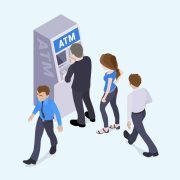The most basic bank account without a doubt is a chequing account. A chequing account offers all the basic features you’ll need in a bank account: the ability to write cheques, deposit funds and withdraw money from an ABM, to name a few. But all chequing accounts aren’t created equal.
In this article we’ll look at what is a chequing account and how does it work, the pros and cons of chequing accounts and best practices when using a chequing account. After reading this article, you’ll be well-equipped with the knowledge you need to choose the chequing account that’s right for you.






